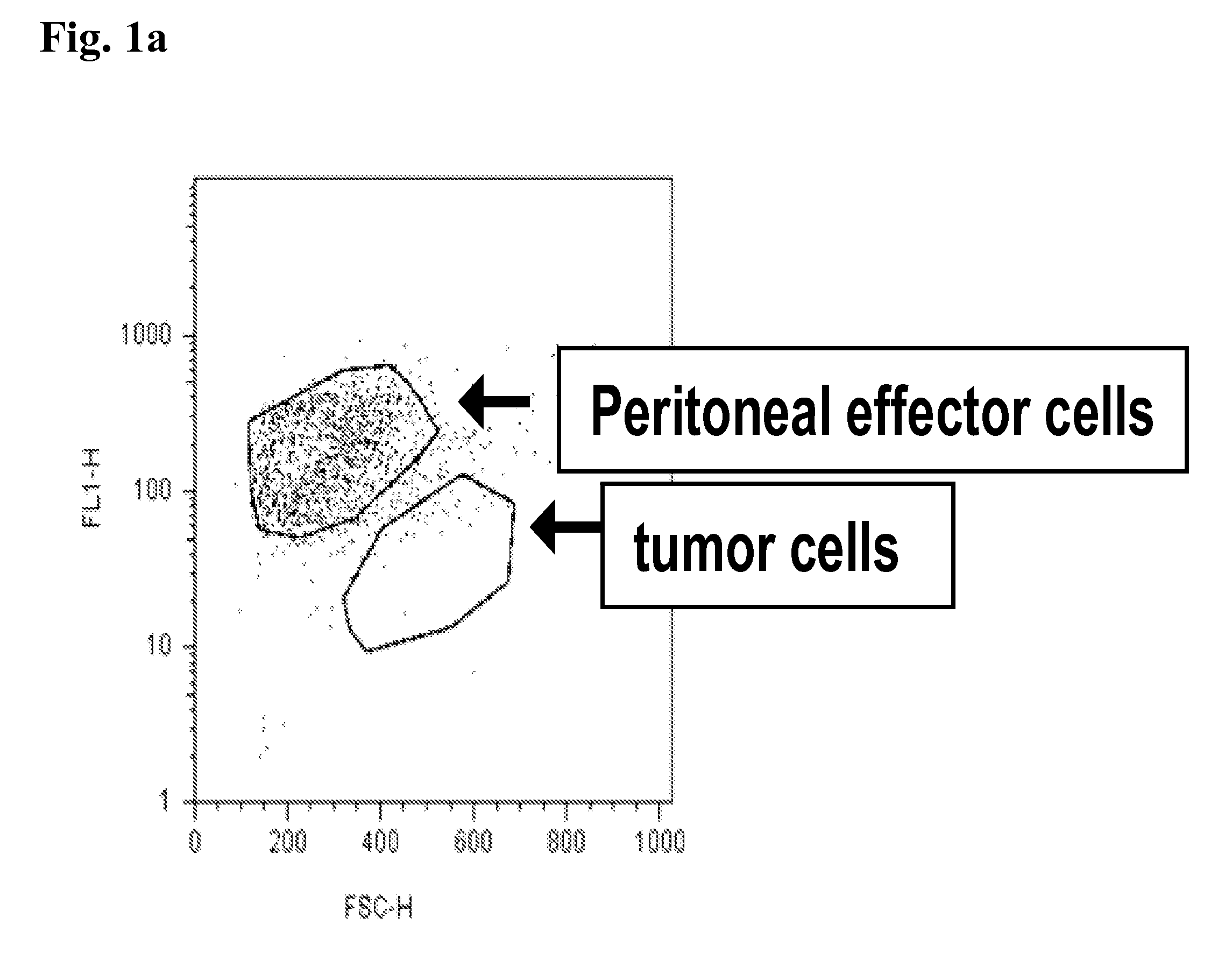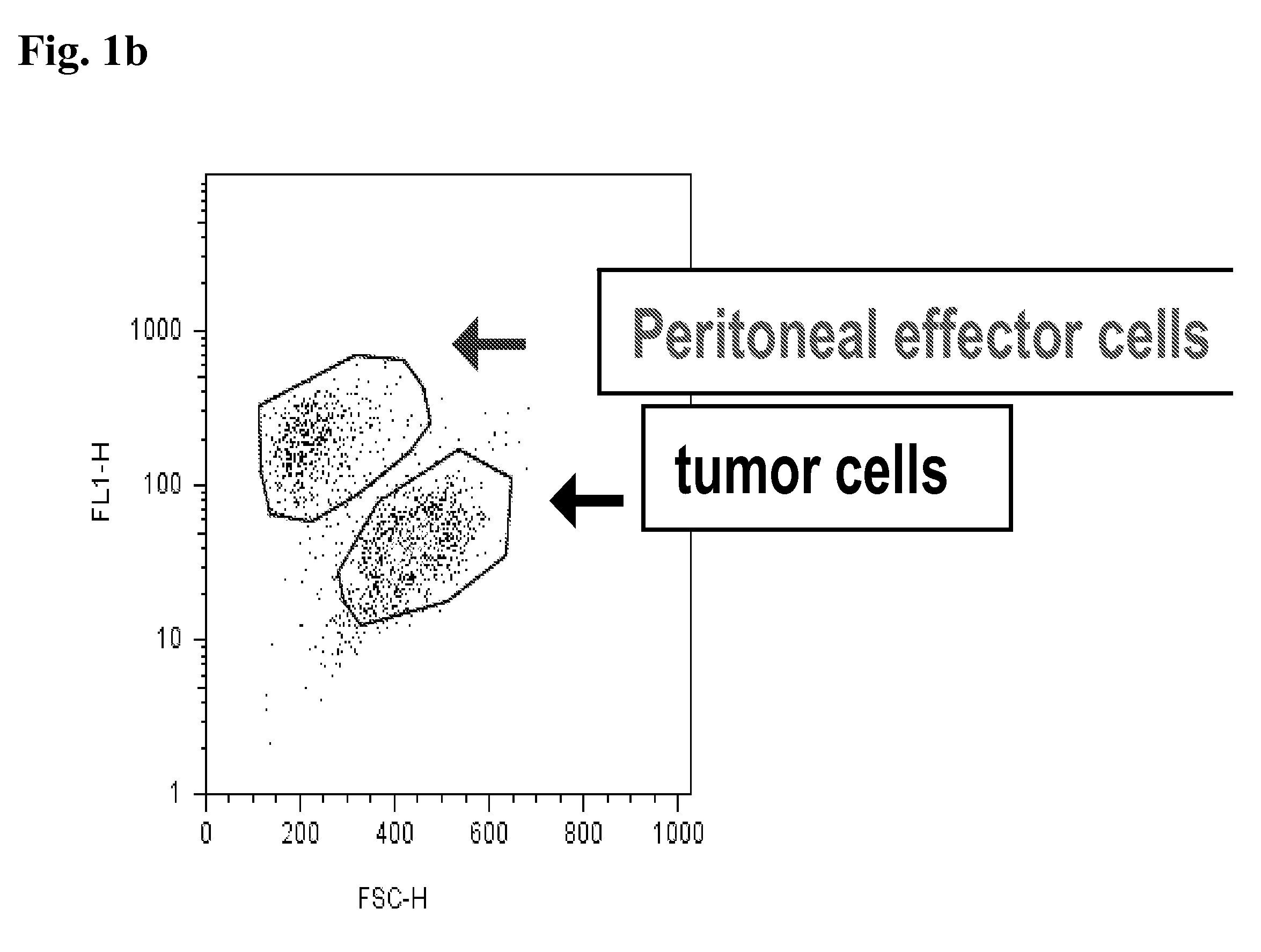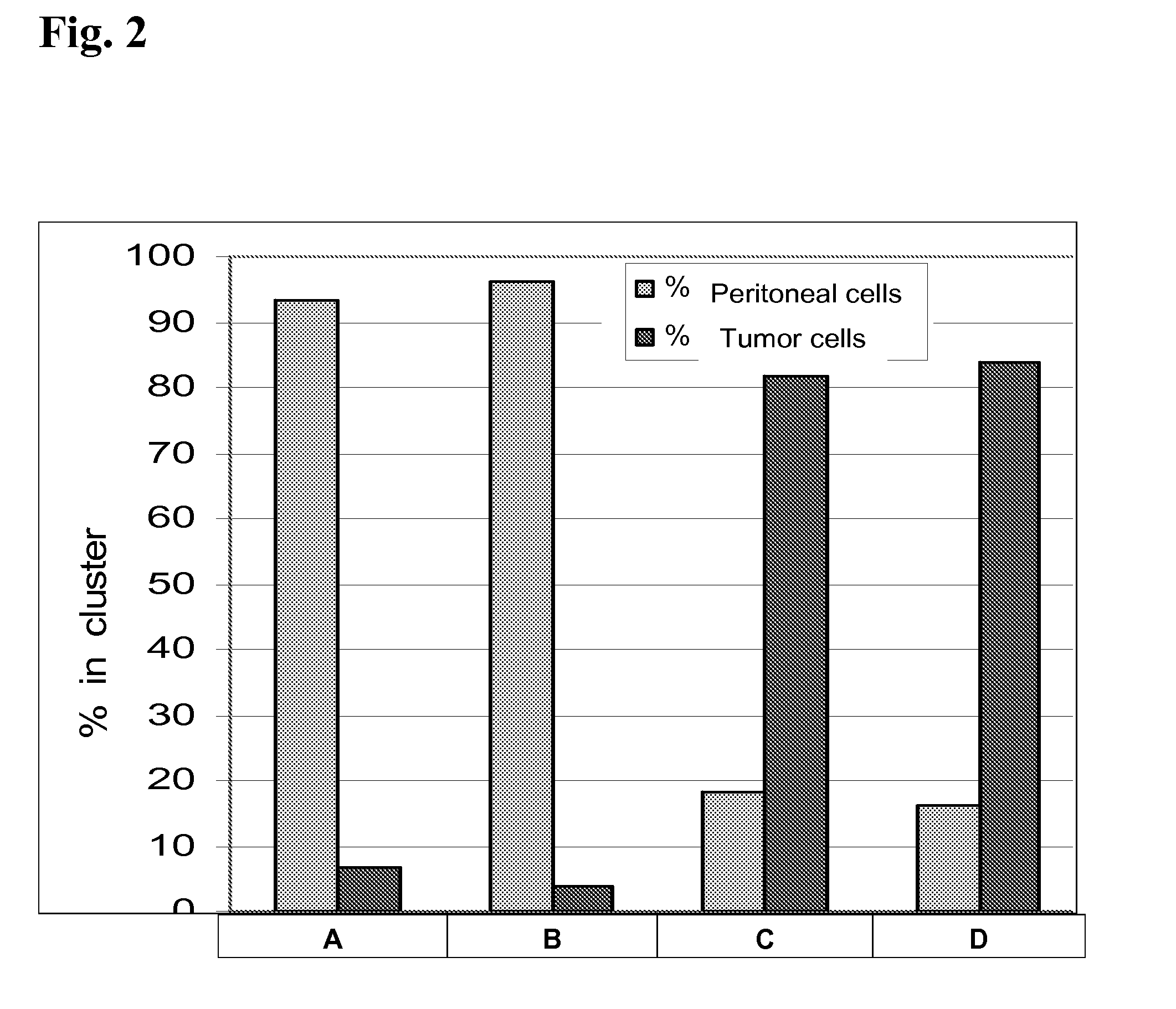Combination therapy of an afucosylated antibody and one or more of the cytokines gm CSF, m CSF and/or il3
a technology of afucosylated antibodies and cytokines, applied in the field of afucosylated antibodies, can solve the problems of harmful hypersensitivity reactions, induction of immune responses, non-human monoclonal antibodies (e.g., murine monoclonal antibodies) typically lack human effector functionality, etc., and achieve enhanced antitumor inhibitory activity and mediating antitumor efficacy
- Summary
- Abstract
- Description
- Claims
- Application Information
AI Technical Summary
Benefits of technology
Problems solved by technology
Method used
Image
Examples
example 1
Stimulation of Peritoneal Monocytes with Different Cytokines and their Specific Effect on Tumor Cell Killing
[0193]In the first experiments, a combination of cytokines was used, which granted growth of peritoneal cells. FIG. 2 shows, that the pericytes / monocytes stimulated with mGM-CSF / mG-GCS / mIL-3, which support differentiation of murine monocytes and growth of granulocytes and macrophages, were able to eliminate tumor cells effectively.
FIG. 2: Peritoneal Effector Cell Response on SU-DHL4 Cells
[0194]In most of the experiments, the above mentioned mGM-CSF / mG-GCS / mL-3 stimulation was chosen, although in later experiments, also single cytokine stimulation resulted in the same efficacy.
[0195]Table 3 summarizes the cytokines tested as single stimulator or in combinations. Effects are characterized as ++, when ≧90%, +, when ≧20% and −, when no tumor cells were eliminated. In all experiments 10 μg / ml anti-CD20 antibodies (afucosylated glycoengineered humanized B-Ly1 (B-HH6-B-KV1 GE), non-a...
example 2
CD20 Specific Tumor Cell Killing
[0197]CD20 positive cell lines (SU-DHL4 and Z-138) as well as CD20 negative cell lines (OCI-Ly19 and Namalwa) were used to show, that the antibody mediated killing of tumor cells by stimulated pericytes / monocytes is target specific. Table 4 summarizes the results of the experiment, in which the pericytes were stimulated by mGM-CSF+mIL3.
TABLE 4Killing of CD20-positive tumor cellsby stimulated pericytes / monocyteseffectorresponseCD20B-HH6-B-KV1CD20histologicalpositive / GE / molecules / cell lineTypenegativeRituximabcellSU-DHL4Diffuse Largepositive+ / +1.018.427Cell LymphomaZ138Mantle Cellpositive+ / +63.645LymphomaOci-Ly19Diffuse Largenegative− / n.d.−Cell LymphomaBurkittNamalwaLymphomanegative− / n.d.−
Table 4 illustrates, that only CD20 positive cells showed antibody mediated killing.
example 3
Contribution of Fc Part of the Antibody
[0198]SU-DHL4 cells were co-cultured with pericytes / monocytes stimulated by mGM-CSF+mIL3 and 10 μg / ml of the respective antibody or fragment were added during co-cultivation. Effects are characterized as ++, when ≧90%, +, when ≧20% and + / −, when there was a minor effect but not zero and −, when no tumor cells were eliminated. The effects are summarized in table 5.
TABLE 5mediation of killing effects by fragments or whole antibodiesAntibodyResponseRituximab++afucosylated glycoengineered humanized B-Ly1 (B-++HH6-B-KV1 GE)non-afucosylated, non-glycoengineered humanized++B-Ly1 (B-HH6-B-KV1)F(ab)2 humanized B-Ly1 (B-HH6-B-KV1 GE)+ / −Fab humanized B-Ly1 (B-HH6-B-KV1 GE)−irrelevant IgG−no antibody−
[0199]SU-DHL4 cells were effectively eliminated by stimulated pericytes / monocytes, when whole antibodies were used. F(ab)2 fragments worked to a minor degree, which might reflect the apoptosis / anti-proliferative contribution inherent in the binding characteris...
PUM
| Property | Measurement | Unit |
|---|---|---|
| concentration | aaaaa | aaaaa |
| concentration | aaaaa | aaaaa |
| pH | aaaaa | aaaaa |
Abstract
Description
Claims
Application Information
 Login to View More
Login to View More - R&D
- Intellectual Property
- Life Sciences
- Materials
- Tech Scout
- Unparalleled Data Quality
- Higher Quality Content
- 60% Fewer Hallucinations
Browse by: Latest US Patents, China's latest patents, Technical Efficacy Thesaurus, Application Domain, Technology Topic, Popular Technical Reports.
© 2025 PatSnap. All rights reserved.Legal|Privacy policy|Modern Slavery Act Transparency Statement|Sitemap|About US| Contact US: help@patsnap.com



